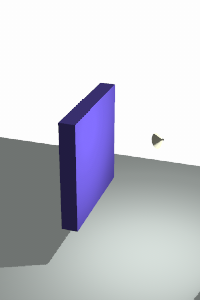Shading
Shading is a technique used in both traditional and digital art to depict light and shadow effects, which gives the illusion of depth and volume on a two-dimensional surface. Shading techniques are essential in various forms of visual art, including drawing, painting, and digital art, allowing artists to create more realistic or dynamically stylized works.
Overview[edit | edit source]
Shading is a fundamental aspect of art that enhances the three-dimensionality of subjects. By varying the tone or color, artists can simulate the effects of light falling on objects. The direction, color, and intensity of light sources are crucial factors that influence shading. Shading techniques can vary widely, from subtle transitions to dramatic contrasts, depending on the artist's intentions and the medium used.
Techniques[edit | edit source]
Several techniques are employed in shading, each offering a different texture and depth to the artwork. Some of the most common methods include:
- Hatching and Cross-Hatching: Hatching involves drawing closely spaced parallel lines to suggest shadows and tones. Cross-hatching uses layers of hatching at different angles to create deeper shadows and textures.
- Stippling: This technique uses dots of varying density and size to represent shadows and tones. Stippling can create a more granular texture.
- Blending: Blending smooths out the transitions between light and dark areas. This can be achieved with tools like blending stumps, fingers, or digital equivalents in software.
- Scumbling: A technique where a layer of broken, speckled, or scribbled marks is used to build up shadows and textures.
- Glazing: In painting, glazing involves applying transparent layers of paint to achieve depth and richness in color, influencing the perception of light and shadow.
Applications in Digital Art[edit | edit source]
In digital art, shading is achieved through a variety of software tools and techniques. Digital artists use layers, blending modes, and brushes that simulate traditional media effects to create depth and volume. Programs like Adobe Photoshop, Procreate, and Blender offer extensive options for artists to explore shading in digital formats.
Importance in Art and Design[edit | edit source]
Shading is not just a technique for realism; it also plays a significant role in conveying mood, atmosphere, and the time of day in an artwork. In graphic design and animation, shading helps in creating visually appealing and dynamic images that can convey complex narratives and emotions.
Learning Shading[edit | edit source]
Mastering shading techniques requires practice and a good understanding of light physics. Artists often start with simple shapes, like spheres and cubes, to practice how light affects an object from different angles. Observational drawing from life is also a crucial exercise in understanding and applying shading effectively.
Navigation: Wellness - Encyclopedia - Health topics - Disease Index - Drugs - World Directory - Gray's Anatomy - Keto diet - Recipes
Search WikiMD
Ad.Tired of being Overweight? Try W8MD's physician weight loss program.
Semaglutide (Ozempic / Wegovy and Tirzepatide (Mounjaro) available.
Advertise on WikiMD
WikiMD is not a substitute for professional medical advice. See full disclaimer.
Credits:Most images are courtesy of Wikimedia commons, and templates Wikipedia, licensed under CC BY SA or similar.
Contributors: Prab R. Tumpati, MD






